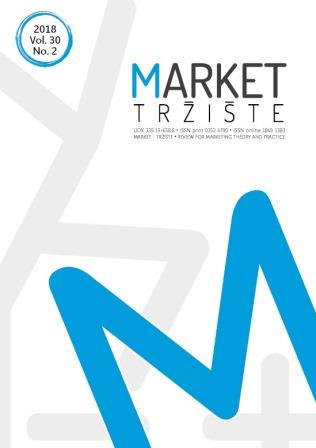User-Generated Tweets about Global Green Brands: A Sentiment Analysis Approach
User-Generated Tweets about Global Green Brands: A Sentiment Analysis Approach
Author(s): Saba Resnik, Mateja Kos KoklićSubject(s): Economy, Marketing / Advertising
Published by: CROMAR (Hrvatska zajednica udruga za marketing) i Ekonomski fakultet Zagreb
Keywords: microblogging; tweets; consumer sentiment; sentiment analysis; global green brands;
Summary/Abstract: Purpose – Microblogging platforms are generating an infinite volume of content on various topics. Therefore, traditional marketing methods can hardly be employed for its effective research, but sentiment analysis has recently emerged to cope with this challenge. While considerable academic effort has been devoted to investigating consumer behavior towards green brands, studies explicitly addressing consumer sentiments regarding such brands are still rare. Hence, we apply the sentiment analysis approach to investigate consumer sentiments towards 26 global green brands.Design/Methodology/Approach – First, we collected a random set of user-generated tweets in English that were posted in a six-month period and included at least one of the selected global green brands. When classifying the posts, we extracted polarity information from a passage, resulting in values ranging from positive to negative.Findings and implications – Based on a relative frequency word count, we found that consumers often express their sentiments about products, their characteristics and personal consequences of using them. Next, we analyzed average positive and negative consumer sentiments. As previously demonstrated, most tweets are either not strongly affective or they are ambiguous. Based on such empirical insights, companies can better manage their brand perception on Twitter and other social media, as an integral part of their proactive marketing strategy.Limitation – The study also has some limitations. It has a limited ability to reveal consumer motivations. The lexicon-based method we used may sometimes fail to recognize subtle forms of linguistic expression.Originality – This research builds onto prior studies on green brands by applying sentiment analysis. It adds to the existing knowledge by investigating consumer sentiments towards 26 global green brands.
Journal: MARKET/TRŽIŠTE
- Issue Year: 30/2018
- Issue No: 2
- Page Range: 125-145
- Page Count: 21
- Language: English

